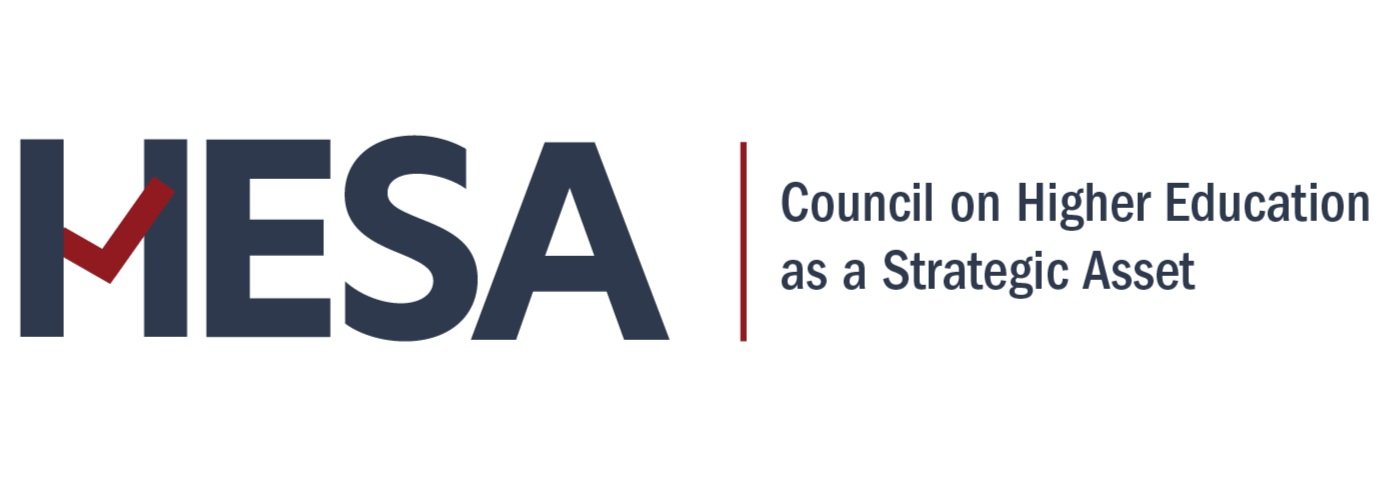

A Commitment to Collaborative Innovation and National Service
Unlike most countries around the world, the U.S. does not have a single federal higher education system.
Instead, our model relies on a partnership between the state and federal governments and our public and private institutions to address multiple educational priorities and achieve the outcomes for our communities and stakeholders. Our loosely coupled, state-based, decentralized system has encouraged innovation among faculty and institutions that has led to our country’s prosperity and made U.S. higher education a leader in the world, but it has made it more difficult to respond to pressing national priorities.
As the country’s needs have changed, the federal government has acted to build new capacity in our higher education system—predominantly by creating new institutional types, funding basic and applied research, and expanding direct funding to students. Given the disruptive factors highlighted in this report, we must build additional capacity in our post-secondary education system to address the critical talent and skills priorities and improve outcomes across all segments of our population so we can remain globally competitive, prosperous, and secure.
Our colleges and universities, with support from philanthropic and employer partners, have been working to develop approaches to these design shifts with important progress.
For example, attainment of a postsecondary degree or credential has risen to 54.3%. The average net price that students pay after subtracting grant aid at both public and private, non-profit colleges and universities has been declining in recent years. Yet, completion rates are still below the levels needed to maintain our competitiveness, and the price of higher education remains out of reach for too many. Our collective challenge is that progress is not moving at the speed, scale, and scope that will be necessary to address the growing talent gaps and achieve progress on the educational outcomes of importance to the American people.
Emerging technologies, such as artificial intelligence and immersive learning tools, will be important to making substantial progress, but designing and implementing technological solutions will be too expensive for all but a handful of well-resourced institutions and will require shifts in institutional cultures, pedagogy, partnerships, and policy to be effective. A commitment to collaborative innovation and national service by our colleges and universities, new forms of cooperation with our partners in the business, non-profit, and government sectors, and substantial public and private investment will be critical to serve the millions of learners that will be needed to address the talent gaps facing our country in the next decade.
The United States has often invested in higher education to accomplish strategic goals, including economic expansion, teacher preparation, scientific research, national defense, and workforce development. Milestones include:
The Morrill Acts
(1862 and 1890)
These acts established land-grant universities focused on agriculture and the mechanical arts, making higher education more accessible to a broader segment of the population as the nation industrialized and expanded.
State Normal Schools and Public Education
(1850-1950)
During the late 19th and early 20th centuries, the U.S. built a network of state normal schools for teacher training. These schools made possible the dramatic expansion of public high school education by 1950 and evolved to become regional public universities in many states. Together, these efforts made America’s system of public education one of the strongest in the world, paving the way for the nation’s global economic expansion after WWII.
The GI Bill
(1944)
Officially known as the Servicemen’s Readjustment Act, the GI Bill provided returning World War II veterans with financial support for tuition, fees, books, and living expenses to attend college or vocational school. This led to a massive increase in college enrollments and the development of a more educated workforce.
National Science Foundation
(1950)
President Harry S. Truman established the NSF to support basic research in higher education, with a mission to “promote the progress of science; to advance the national health, prosperity, and welfare; and to secure the national defense."
National Defense Education Act
(1958)
In response to the Cold War and the Soviet’s launch of the Sputnik satellite in 1957, this act offered the first federal student loans and sought to promote the study of science, mathematics, and foreign languages to enhance national security.
Expansion of Public Higher Education
(1950-1972)
Following World War II, there was a significant expansion of public higher education institutions, driven by public funding. States dramatically expanded community colleges and public universities, providing substantial tuition assistance to students. The federal government also provided assistance, including the formal creation of Pell Grants for low-income students. These investments made higher education more accessible and affordable, and contributed to a more educated and skilled workforce.
The federal government has well established mechanisms by which it compels higher education institutions to work together to address important national interests through basic and applied research.
The research infrastructure balances prioritizing national interests with flexibility, peer review, and grassroots proposals to fuel research, design, and experimentation in strategic areas.
These include:
National organizing entities that identify, prioritize, and/or direct funding toward some of our most pressing national concerns.
Dedicated research and development funding to prioritize and organize investments connected to those concerns.
National laboratories as sites for putting top minds together to design new models and offer innovative solutions that rapidly respond to critical needs of the country.
America does not have such a mechanism to prioritize, organize and invest in what is emerging as one of the most critical components of keeping America prosperous and safe—unleashing the talent of all our people, regardless of demographic, socioeconomic or geographic factors, and preparing them to contribute meaningfully to our modern workplace, society, and democracy. Channeling talent to fill critical areas of unmet need in health care, artificial intelligence, cyber security, education, and engineering is especially pressing, and unfilled positions are waiting.
Developing the human capital required to remain globally competitive is our country’s 21st century moonshot.
This is an urgent challenge, and our country requires a coordinated national strategy to respond to the complex, strategic education and talent needs of the United States. Achieving this moonshot will require higher education systems and institutions, state and federal governments, public and private funders, and business and industry partners to collaborate in the national interest and invest in research and innovation that:
Responds to calls from national and state councils to address critical talent and skills gaps.
Addresses wicked problems lacking clear ownership that can only be solved by multi-sector partnerships working together in new ways.
Creates new models and learning designs that address existing barriers and make measurable progress on the outcomes that matter most to the American people.
Generates designs and technologies that can be tested in state and local contexts and be scaled nationally to achieve measurable national impact.

A National Call to Action
The following are elements of a unified, bipartisan national initiative to develop the human capital required to remain globally competitive. The following elements form a blueprint for action that will move us toward our bold vision.
1. A national alliance that is unified around a shared vision for higher education’s role in advancing national competitiveness, securing democracy’s future, and taking the actions necessary to address critical talent and educational gaps. The HESA convenings demonstrated the power of bringing a wide range of organizations and perspectives together to discuss and debate how to address the most pressing education and talent challenges facing our country. Our country's leaders from higher education institutions, state and federal governments, K-12 education, business and industry, and civic and philanthropic organizations should pledge to work together to align strategies, policies, and investment priorities for achieving educational goals and talent priorities at the speed, scale, and scope necessary to secure America’s future and hold each other accountable for results.
2. An executive role within the White House to coordinate the strategy and funding of relevant federal departments and federal agencies that impact the achievement of specific talent development goals.
3. A national talent council that connects state-level talent development goals and skills gaps and elevates those that have strategic, national implications. Potential actions would be to:
Identify high priority industries and skills gaps and connect state-level strategies and data systems to achieve and track national goals.
Bonvene national industry councils and unions regularly to understand the emerging skills and competencies required within specific industries.
Host a biannual national summit to establish and track achievement of strategic talent goals.
Identify and advocate for state and federal policy changes needed to support achieving strategic talent goals and addressing critical skills gaps.
Anchor a strategic alliance of all 50 states committed to working in collaboration to address strategic talent and education priorities.
4. Investment of federal, state and private resources to advance America’s strategic education and talent goals. New investments would be used to fund:
Research, development and testing of new models of educational design and delivery that achieve better outcomes for all student populations at a lower cost to the American people.
Dissemination of promising models and technologies across different classifications of institutions, geographic regions, and student populations, with ongoing, networked assessment and improvement.
5. A national recognition for institutions that contribute to the achievement of national strategic education and talent priorities. Possibilities include a White House or National Governor’s Higher Education Innovation award for institutions and their business and community partners who advance the achievement of national priorities or a future Carnegie Elective classification for institutions committed to national service.
6. A public corporation that would serve as the organizing and funding entity for the design, incubation, and dissemination of new, more effective models and technologies that address the priorities that are elevated by the national talent council and other commissions focused on strengthening America’s economic prosperity, national security, and democracy. As an independent entity, it could receive funds and technical assistance from federal and state governments, federal agencies, companies and associations, universities, and foundations. Potential actions could be to:
Organize and fund innovation teams or clusters of institutions and partners to propose and design responses to specific strategic talent or education priorities. Teams of colleges and universities from different institutional classifications would work together to design, test, and scale educational models with the goal of outperforming current approaches and achieve strategic targets. Interested institutions would submit a proposal to be part of the innovation cluster and commit to data sharing and public reporting of outcomes.
Establish a platform for disseminating and improving promising practices and distill the lessons and insights for application across the U.S. higher education system.

